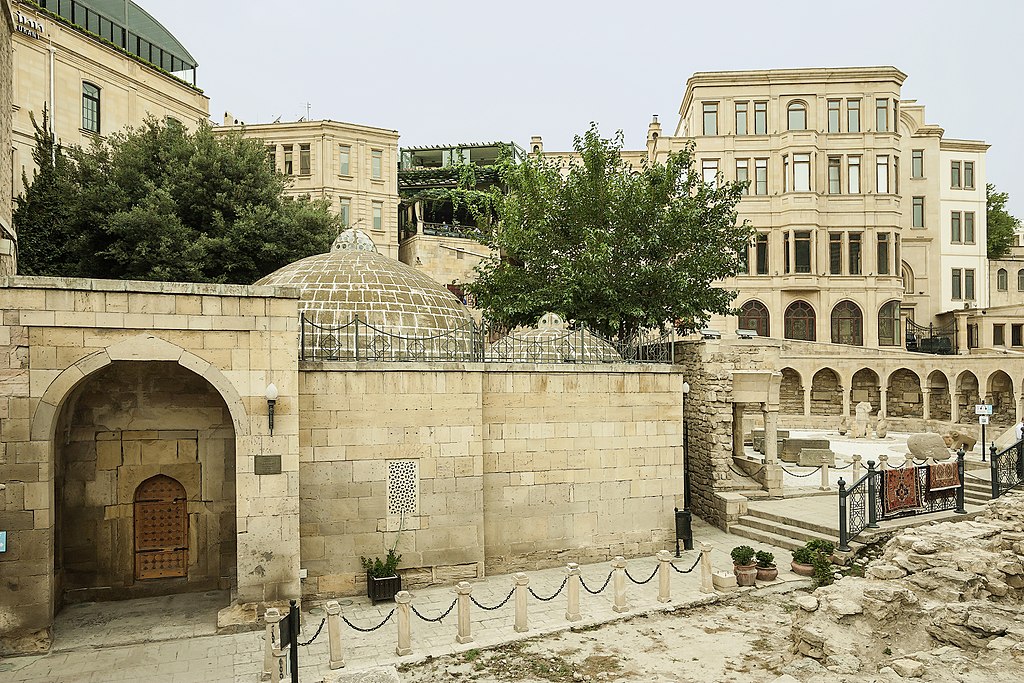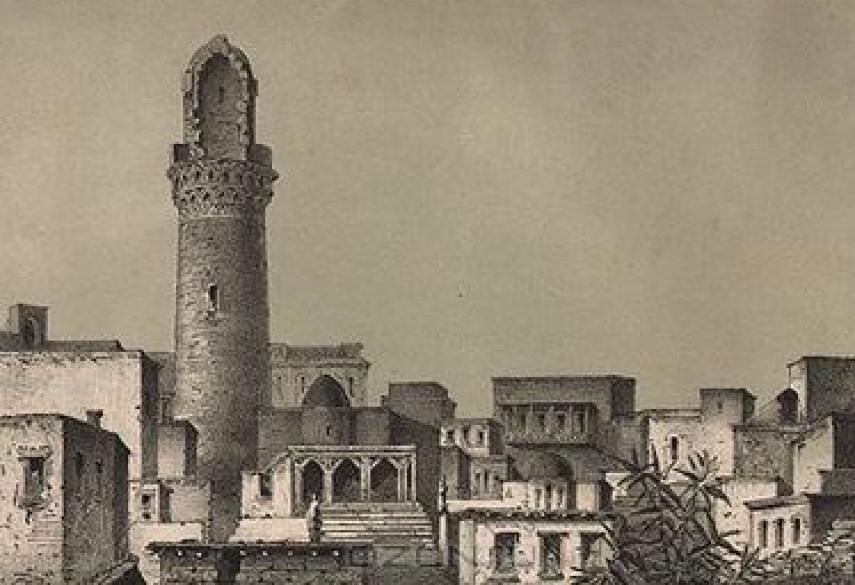The Old City is the most ancient part of Baku, which is surrounded by walls. In December 2000, the Old City of Baku, including Palace of the Shirvanshahs and Maiden Tower came the first location in Azerbaijan to be classified as a UNESCO World Heritage Site.
It is widely accepted that the Old City, inc. its Maiden Tower, date at least to the 12th c. ..

with some researchers contending the dates of construction as far back as the 7th c. Since then, monuments as Synyg Gala Minaret (11th c.), the main fortress walls (11th–12th c.), Bukhara Caravanserai and Gasimbey bathhouse (16th c.) -temporary closed- , Palace of the Shirvanshahs (15th–16th c.), Multani Caravanserai and Hajji Gayyib bathhouse (15th c.), the Maiden Tower were built.





One of the masterpieces of the medieval architecture of the ancient city is the residence of Shirvan governors – the Shirvanshahs' Palace Ensemble which has preserved its historic and architectural features up to date. The palace was built in XV centure after the earthquake flattened the city of Shemakhy and the capital was transferred to Baku. It has been described by UNESCO as "one of the pearls in the azerbaijani architecture" in the Old City.
The Palace ensemble consists of 9 buildings: the Palace, the Divankhane (Court –House), the Dervish's Mausoleum, the Eastern Gate (Portal), the Palace mosque, the Key-Qubad mosque, the Palace Burial-Vault, the Hamam (bath-house) and the ovdan (storage lake).


The Tower is covered by cloud of mysteries and legends which are rooted to the history and culture of Azerbaijan.
However apart from legends, it has been difficult to find historical explanations or archaeological or written evidence as to why the tower was called the Maiden Tower. In addition to epical backgrounds, it is believable that the word "maiden" means that the tower was not destroyed by any enemy and thus means (from the religious viewpoint) that it was never desecrated (touched) by the evil of Angra Mainyu and remains the "virgin" or "maiden" temple-tower of the Zoroastrianian God, Ahura Mazda
Some scientific sources indicate that the Maiden Tower is a paramount example of Zoroastrianism and the pre-Islamic architecture. There are some archeological and architectural evidences and argues that the Tower is Zoroastrians' Fire temple-Tower which had 7 fire exits on the top of the tower.[8] Zoroastrian believed that there are 7 Steps or 7 Sky to reach heaven.
The palace is located in the territory left of the Shamakhy gate. During the khanates period of Azerbaijan, which occurred after the collapse of the Shirvanshah state in the 17th century, Baku khans lived in this palace. No official information exists about the exact foundation date, however, it is estimated to be built around 1750 by the first Khan of Baku
the palace complex is seen as one of the most significant and valuable pieces of the architectural legacy of the Baku Khanate.The latest excavations were in 1985, 1986, and 2018. Besides a lot of cultural samples, a water supply system and underground architectural constructions also were discovered here. Presently, the Palace complex consists of the house of the last Baku khan – Huseyngulu Khan as well as his family members, Abdurrahim bey and Mehdigulu bey.


According to many modern archaeologists, there was a pagan sacred center on the site of the Juma mosque, where fire worshipers gathered.
The mosque was built on the site of a temple of fire worshipers. Four uncovered arches remained from the old building, which presumably belonged to the temple. In the 15th century, a minaret was added to the north side of the mosque. By the end of the XIX century. the old mosque fell into disrepair and a new one was erected in its place - the Juma mosque.
In 2008, the mosque was completely restored, heating and lighting systems were installed. The walls of the mosque are engraved with handmade decorations, suras from Koran and the names of five sacred members of Islam Ahl al-Bayt.
According to Arabic inscription it was built by Muhammad the son of Abu Bakir in 1079 (471 of Hijra), meaning the architect was not only a ustad-rais (master), but also a head of artificers’ band.
The Muhammad mosque is also known as Siniggala- “damaged tower" and we must say this name has a fascinating history, with such participants as the admiral of the squadron of the Russian fleet, who served under the command of Peter the Great himself.

It is the first building in Azerbaijan, which is related to Islam and dated for its architectural ligature..
From that time until the 19th century, the minaret of the mosque wasn't reconstructed. It remained a symbol of the persistence and courage of the defendants of the tower.


The park was established in 1830 by the governor Mikhaelovsky originally called Mixaylov bağı (Garden). Some decades after it was extended to Park to 4.6 Ha (11 acres).
Park received another name "Vakhid's Garden" In 1990, after the name of the poet Aliaga Vakhid. the monument was erected in the garden and restored. Then the bust of Vahid was moved inside the fortress walls, where it stays to our day. In the early 20th century, there were plans to create a concert hall in the park, a summer pavilion was built.


The park was renovated in the 1970s and then further renovated beginning in 2007, lovely summer fountain designed by the Inter Art French company has been added. After the restoration, the garden became known as the Philharmonic Park

In the early 20th century, there were plans to create a concert hall in the park, a summer pavilion was built. The park was renovated in the 1970s and then further renovated beginning in 2007, lovely summer fountain designed by the Inter Art French company has been added. After the restoration, the garden became known as the Philharmonic Park

in 1990 the park gets another name "Vakhid's Garden", after the name of the poet Aliaga Vakhid. the monument was erected in the garden and restored. Then the bust of Vahid was moved inside the fortress walls, where it stays to our days.

The park was established in 1830 by the governor Mikhaelovsky originally called Mixaylov bağı (Garden). Some decades after it was extended to Park to 4.6 Ha (11 acres).